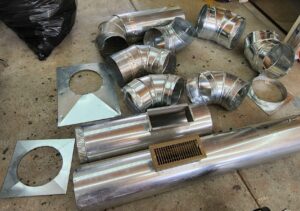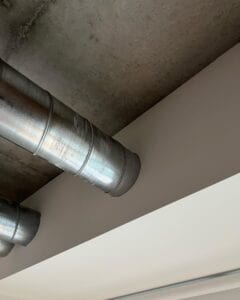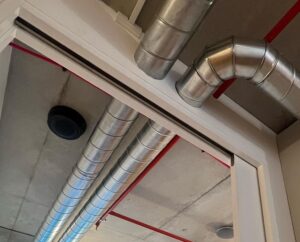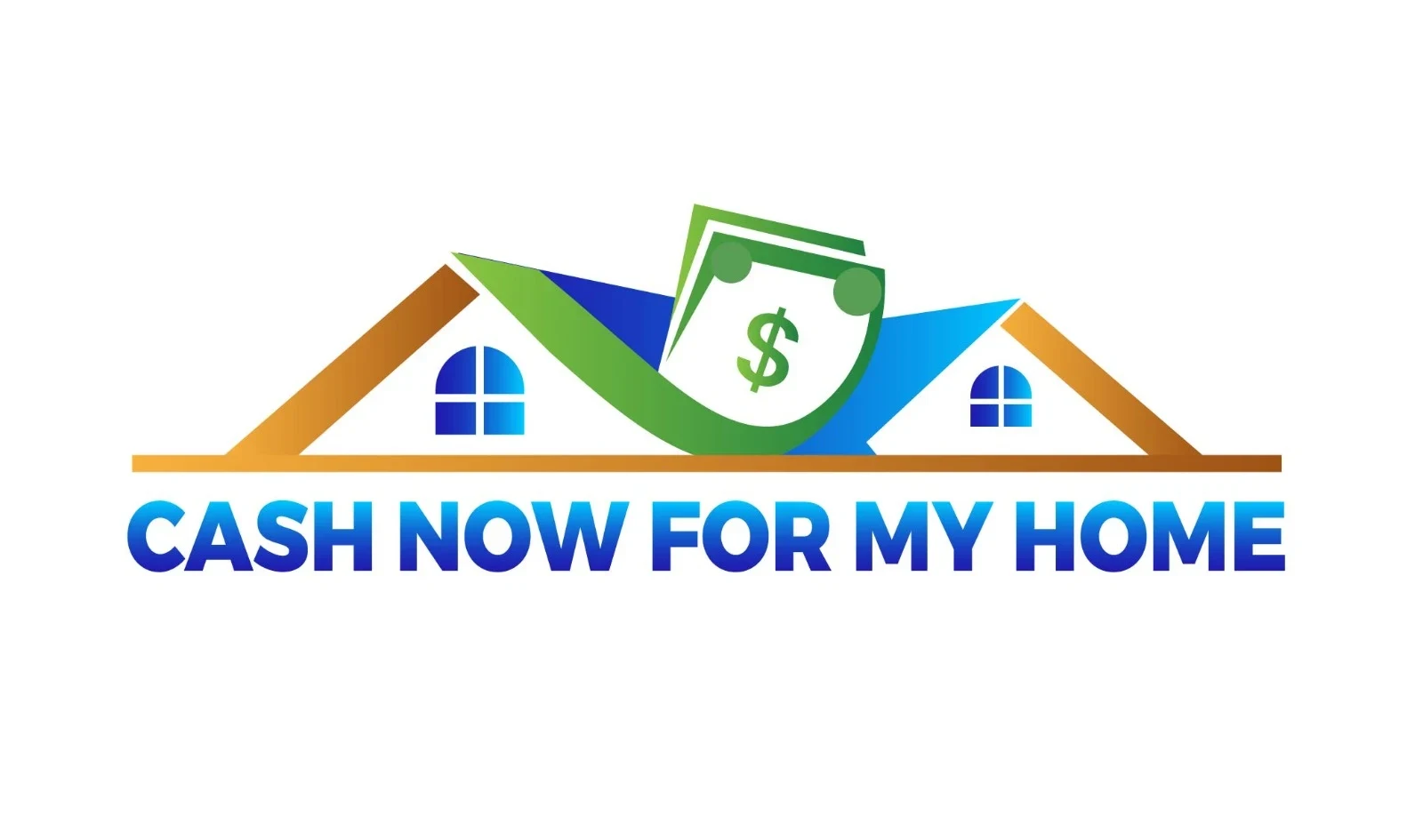Are you tired of feeling like your heating and cooling system is constantly working overtime, yet your mobile home still feels uncomfortable? The culprit may be leaky ductwork. In this article Sealing Mobile Home Ductwork we will discuss sealing your mobile home duct work and all the benefits that come with it.

Sealing Mobile Home Ductwork
Properly sealed ducts are crucial for efficient heating and cooling in mobile homes.
Not only does it save homeowners money on their energy bills, but it also improves indoor air quality by preventing dust and pollutants from entering the home.
One popular method for sealing ductwork in mobile homes is Aeroseal, a technology that seals gaps and leaks with a sealant mist. Homeowners can use aluminum tape to seal gaps and leaks themselves, preventing energy waste.
By prioritizing duct sealing, mobile homeowners can enjoy comfortable temperatures year-round while also saving money on their energy bills. Don’t let leaky ducts disrupt your peace of mind – invest in proper sealing today.
Benefits of Sealing Ductwork in a Mobile Home
Improves Energy Efficiency
Sealing ductwork in a mobile home can significantly improve energy efficiency. When there are leaks or gaps in the ductwork, conditioned air can escape into unconditioned areas of the home, such as attics or crawl spaces. This causes your HVAC system to work harder than necessary to maintain a comfortable temperature inside your mobile home. By sealing your ducts, you can prevent this loss of conditioned air and reduce the workload on your HVAC system. As a result, you’ll save money on utility bills over time.
Reduces Utility Bills
One of the primary benefits of sealing ductwork in a mobile home is that it can help reduce utility bills by preventing air leaks. When there are gaps or holes in your ducts, heated or cooled air escapes into unconditioned spaces rather than circulating throughout your living areas. This results in higher energy usage and increased costs for heating and cooling. By sealing these leaks, you can keep more conditioned air inside your living areas and reduce the amount of energy needed to maintain comfortable temperatures.
Improves Indoor Air Quality
Sealed ductwork can also improve indoor air quality by reducing the amount of dust and pollutants that enter your living space through leaks and gaps. Unsealed ducts allow dust, dirt, mold spores, and other allergens to enter your home’s living areas from unconditioned spaces like attics or crawlspaces. These contaminants can trigger allergies or respiratory issues like asthma if left unchecked. Sealing up any leaks in the ductwork will prevent these particles from entering your living spaces.
Extends Lifespan of Your HVAC System
Properly sealed ductwork extends the lifespan of an HVAC system by reducing its workload when heating or cooling a mobile home. Leaks force systems to work harder than necessary because they have to compensate for lost airflow due to leaking ducts. This extra work can cause your HVAC system to wear out faster, leading to costly repairs or replacements. Sealing the ductwork will reduce the workload on your HVAC system and help it last longer.
Improves Overall Comfort: Sealing Mobile Home Ductwork
Sealing ductwork can also improve the overall comfort of your home by ensuring consistent airflow throughout your living areas. Leaks in the ductwork can cause uneven heating or cooling, making some rooms too hot or too cold. By sealing these leaks, you’ll ensure that conditioned air is distributed evenly throughout your mobile home, providing a more comfortable living environment.
How to Seal Heating Ducts in a Mobile Home to Save Money
If you own a mobile home, you know that keeping it warm in the winter can be a challenge. One of the most significant contributors to heat loss is leaky ductwork. Fortunately, sealing your heating ducts can help save money on energy bills and keep your home more comfortable during the colder months. Here’s how to seal heating ducts in a mobile home.
Where to Seal Heating Ducts
Before you begin sealing your heating ducts, it’s essential to locate where they need sealing. The most common areas for leaks are joints and connections between sections of ductwork. You may also find holes or gaps caused by damage or poor installation.
To locate leaks, turn on your furnace and feel along the ductwork for any cold air escaping. You can also use a smoke pencil or incense stick to detect airflow.
Once you’ve located any leaks, mark them with tape so that you can find them again when it’s time to seal them.
How to Seal Heating Ducts
Now that you’ve located any leaks in your heating ducts, it’s time to seal them up. There are two primary methods for sealing: mastic sealant and metal tape.
Mastic sealant is ideal for larger gaps or holes in the ductwork. It’s a thick paste-like substance that hardens over time and creates an airtight seal around the leak. Use a paintbrush or putty knife to apply mastic over the leaky area, making sure to cover it completely.

Metal tape is better suited for smaller gaps or cracks in the ductwork. It’s made of aluminum foil with an adhesive backing that sticks firmly to metal surfaces. Cut a piece of metal tape slightly larger than the leaky area and press it firmly into place over the gap.
Whichever method you choose, make sure that all leaks are thoroughly sealed to prevent any air from escaping.
Insulating Your Ducts: Sealing Mobile Home Ductwork
Once you’ve sealed any leaks in your heating ducts, it’s essential to insulate them. Insulation helps prevent heat loss and improves the efficiency of your heating system.
There are several types of insulation available for ductwork, including fiberglass, foam board, and reflective insulation. Fiberglass is the most common type of insulation and comes in rolls or blankets that can be wrapped around the ductwork.
Foam board insulation is a rigid panel made of polystyrene foam that can be cut to fit around the ductwork. Reflective insulation is made of aluminum foil with a layer of bubble wrap between two layers of foil. It reflects heat back into the room and is ideal for use in warmer climates.
Whichever type of insulation you choose, make sure that it’s rated for use on heating ducts and that it’s installed tightly around the ductwork without any gaps or holes.
Hiring a Professional
If you’re unsure about how to properly seal your heating ducts or don’t feel comfortable working with HVAC equipment, it’s always best to hire a professional.
Signs You Need to Replace Your Mobile Home Duct System
Mobile homes are a popular housing option for many people. They are affordable, easy to maintain, and can be moved from one place to another. However, like any other home, mobile homes require regular maintenance and repairs. One of the essential components of a mobile home is the duct system that circulates air throughout the house. Over time, this duct system may need repair or replacement due to various reasons.
Age of Mobile Home Duct System
The age of your mobile home plays a significant role in determining whether you need to replace your duct system or not. If your mobile home is more than 20 years old, it’s likely that the ductwork needs replacement. The older the ductwork gets, the more susceptible it becomes to wear and tear. Older systems may also become less efficient and cause increased energy bills.
Increased Energy Bills
If you notice an increase in your energy bills without any apparent reason, it could be due to problems with your mobile home’s duct system. Leaks in the ductwork can cause hot or cold air to escape before it reaches its destination, leading to higher energy consumption and increased costs.
Uneven Temperature Distribution
Another sign that you need to replace your mobile home’s duct system is uneven temperature distribution throughout the house. If some rooms are too hot while others are too cold, there might be an issue with your HVAC system’s ability to distribute air evenly through all parts of your home.
Poor Air Quality
Poor indoor air quality is another sign that you need to replace your mobile home’s duct system. Dirty or damaged ducts can lead to mold growth or accumulation of dust and debris inside them. This can negatively affect indoor air quality and lead to health problems such as allergies or respiratory issues.
Read our article on How to Clean Duct Work in a Mobile Home

Replacing Your Mobile Home Duct System
If you notice any signs mentioned above indicating that you need a new mobile home duct system, it’s essential to take action immediately. Replacing the ductwork in your mobile home can be a significant investment, but it’s worth it in the long run.
Here are some steps to follow when replacing your mobile home duct system:
Hire a professional HVAC contractor to inspect your current duct system and recommend the best replacement options.
Choose high-quality materials for your new duct system that will last longer and improve energy efficiency.
Ensure that all ducts are properly sealed and insulated to prevent air leaks and improve indoor air quality.
Consider upgrading to a more advanced HVAC system that can further improve energy efficiency and reduce energy costs.
Steps for Replacing a Duct System in a Mobile Home
If you have noticed that your mobile home’s heating and cooling system is not working efficiently, it may be time to replace the ductwork. Replacing the duct system in a mobile home can seem like a daunting task, but with the right tools and knowledge, it can be done.
Assess the condition of the existing duct system before replacing it.
Before replacing your mobile home’s duct system, you need to assess its condition. Check for any leaks or damage that may have occurred over time. If there are only minor issues, such as small holes or cracks, you may be able to repair them instead of replacing the entire system.
However, if there is significant damage or wear and tear throughout the ductwork, replacement may be necessary. If your current ducts are too small or improperly sized for your mobile home’s heating and cooling needs, replacement will also be necessary.
Remove the old ductwork carefully to avoid damaging other parts of the mobile home.
Once you have determined that replacement is necessary, it’s time to remove the old ductwork. This process should be done carefully to avoid causing any further damage to other parts of your mobile home.
Start by turning off power to your HVAC unit and disconnecting any electrical connections leading into your old ducts. Then use pliers or tin snips to cut through any metal straps holding the old ducts in place. Carefully pull out each section of old ductwork while checking for any additional damage along the way.
Install new ductwork that is properly sized and sealed to ensure efficient airflow.
After removing all of the old ductwork from your mobile home, it’s time to install new ones. It’s important that you choose properly sized and sealed new ducts so they can provide efficient airflow throughout your space.
Measure each room where you’ll need new air vents installed so that you can determine the correct size of ducts required. Once you have all the measurements, purchase new ductwork that is appropriately sized for your mobile home’s heating and cooling needs.
When installing the new ducts, make sure to seal all joints with metal tape or mastic sealant. This will help prevent air leaks and ensure efficient airflow throughout your mobile home.
Test the new duct system for leaks and make any necessary adjustments.
After installing your new duct system, it’s important to test it thoroughly for leaks. Turn on your HVAC unit and check each vent in every room of your mobile home to ensure that air is flowing properly.
If you notice any leaks or issues during testing, make any necessary adjustments to fix them. This may include resealing joints or replacing sections of ductwork that are not functioning correctly.
Cost of Mobile Home Duct System Replacement
Mobile home ductwork replacement is an essential aspect of maintaining a comfortable living environment. Over time, the ducts in mobile homes can become damaged or worn out, leading to inefficient heating and cooling systems.

Average Cost
The average cost of mobile home duct system replacement is around $3,000. However, the actual cost may vary depending on several factors such as the size of your mobile home and the complexity of the job.
Factors Affecting Cost
The cost of replacing your mobile home’s ductwork depends on several factors. One significant factor that affects the price is the size of your mobile home. The larger your house, the more it will cost to replace all the air ducts.
Another factor that affects the price is how complex the job is. If there are many turns and twists in your existing ductwork or if it has been poorly installed, it will take longer to remove and install new ones.
Steps Involved in Mobile Home Ductwork Replacement
Mobile home ductwork replacement involves several steps which include:
Removing Old Ducts – The first step in replacing your mobile home’s air ducts is removing old ones.
Installing New Ones – Once you have removed all old air ducts, you need to install new ones.
Sealing Any Leaks – After installing new air ducts, ensure that they are sealed correctly to prevent any leaks.
Why Is It So Expensive To Replace Mobile Home Ductwork?
Replacing mobile home air ducts can be expensive because it requires skilled labor and specialized tools to complete successfully. Because most mobile homes are built off-site with pre-existing HVAC systems already installed, access to these systems can be limited and require extra work for installation/removal.
Moreover, since most older mobile homes haven’t had their ductwork replaced in years, there may be additional costs associated with repairing any damage caused by the old ducts.
Frequency of Mobile Home Duct System Replacement
Mobile home air ducts should be replaced every 10 to 15 years to ensure proper functioning of the HVAC system. Regular maintenance and cleaning can also prolong the lifespan of your air ducts.
Ensuring Properly Functioning Ductwork for Optimal Energy Efficiency and Savings
Properly functioning ductwork is crucial for optimal energy efficiency and savings in your mobile home. Sealing heating ducts can prevent air leaks, which can save you money on your energy bills. Signs of wear and tear may indicate the need for a replacement of your mobile home duct system.
To ensure that your mobile home’s duct system functions properly, it is important to seal any leaks. This will help you save money on your energy bills and keep your home comfortable all year round. If you notice any signs of wear or damage, consider replacing your duct system to avoid further issues down the line.
There are several steps involved in the process. It is important to choose a reputable company with experience in this area to ensure that the job is done correctly.
Conclusion: Sealing Mobile Home Ductwork
Overall, proper maintenance of your mobile home’s duct system can lead to significant cost savings over time while keeping your home comfortable. Don’t hesitate to take action if you notice any issues with your ductwork.
Read our article How to Winterize a Mobile Home
FAQs: Sealing Mobile Home Ductwork
Q: How do I know if my mobile home’s duct system needs repairing?
A: Signs of wear and tear such as cracks or holes in the ducts, uneven airflow throughout the house, and increased energy bills may indicate that it’s time for repair or replacement.
Q: Can I repair my mobile home’s duct system myself?
A: While some minor repairs can be done by homeowners themselves using mastic sealant or metal tape, major repairs should be left to professionals who have experience with mobile homes specifically.
Q: What are the benefits of sealing heating ducts in my mobile home?
A: Sealing heating ducts prevents air leaks which leads to more efficient heating and cooling throughout the house as well as lower energy bills.
Q: How much does it cost to replace a mobile home’s duct system?
A: The cost of replacing a mobile home’s duct system can vary depending on the size of the home, the type of system needed, and other factors. It is important to get quotes from reputable companies beforehand.
Q: How often should I have my mobile home’s duct system inspected?
A: It is recommended to have your mobile home’s duct system inspected at least once a year to ensure that it is functioning properly and catch any issues before they become major problems.
You might also be interested in our articles:

